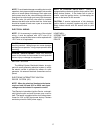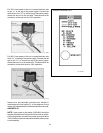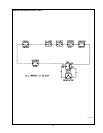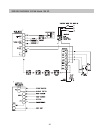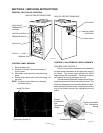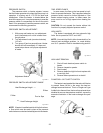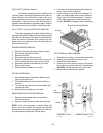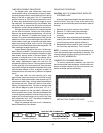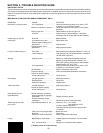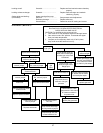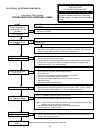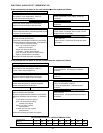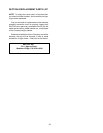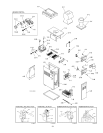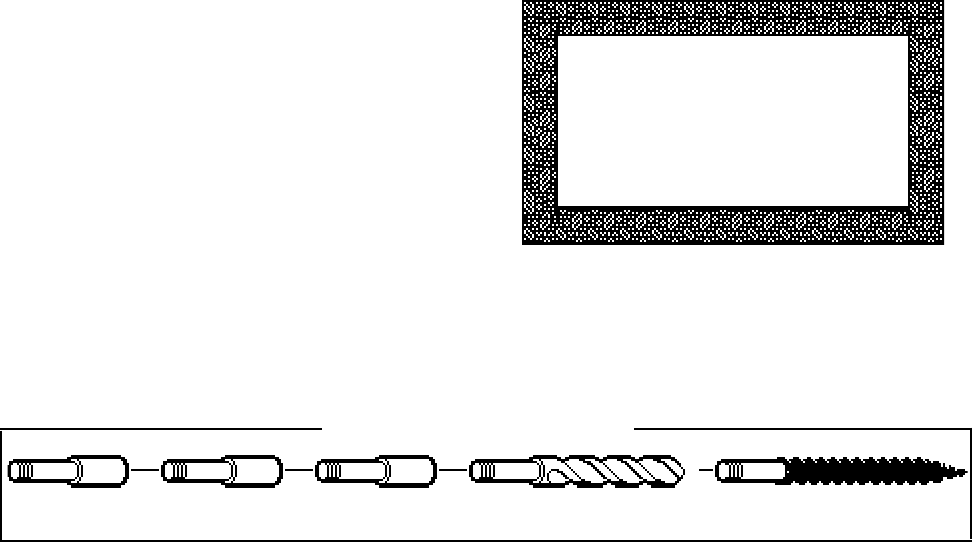
DESOOTING PROCEDURE
CAUTION: SOOT IS COMBUSTIBLE. EXERCISE
EXTREME CARE.
Soot can clog areas between fins and cause even-
tual tube failure. Any sign of soot at the base of the
burners or around the outer jacket indicates a need for
cleaning.
1. Remove top and flue collector from cabinet.
2. Remove "V" baffles from heat exchanger.
3. Remove burner drawer. (See burner tray
removal).
4. Take garden hose and wash heat exchanger,
making sure soot is removed from between fins.
(Avoid excessive water against refractory).
5. Reassemble-When heater is fired, some steam
will form from wet refractory. This is normal.
NOTE: In extreme cases it may be necessary to re-
move the heat exchanger completely for cleaning. The
simplest method is steam cleaning at the local car
wash. DO NOT WIREBRUSH.
COMBUSTION CHAMBER REMOVAL
To remove combustion chamber, you must first
have removed the heat exchanger. Unbolt metal com-
bustion chamber retainer from top and remove com-
bustion chamber panels individually.
TUBE REPLACEMENT PROCEDURE
On Raypak units, tube replacement may be ef-
fected without rolling, as a temporary means of repair,
providing there are two or more tubes rolled in to act as
stays on the left or right sides. The "O" rings should
provide a seal up to 125 PSI working pressure. Use 3/
8" heavy duty reversible drill motor or larger to power
the tube roller. If a reversible drill is not available, after
rolling the tube in, remove the drill motor and wrench
out the roller. A tube roller is available from the factory.
Shut gas and power off to the unit, close the system
off and drain the heater. Remove the draft diverter.
Remove the access panel and jacket top. Lift the flue
collector off. Remove "V" baffles over tube(s) to be
replaced. If no pipe unions have been provided, use the
header as a union, remove the flange nuts off the inlet-
outlet header, break gas connection and slide heater
away from piping to allow room to work. Pull wedge
clips out of control wells and remove sensing bulbs. Lift
heat exchanger straight up and out.
Inspect header gaskets at this time. Unless sev-
ered, they are reusable. The tube may be cut out with
a hacksaw or hammer and chiseled adjacent to both
tube sheets, leaving studs in the tube sheets. Then
proceed to collapse studs in the tube sheets with a
chisel or screwdriver. Use caution not to cut into the
tube sheet. Replacement tubes will have the fins
stripped off longer on one end. The long end is inserted
into the opening of the tube sheet first; then the short
end is fitted through the opposite tube sheet. If the tube
ends become dented or bent, straighten at least (4)
inches back from the tube end by means of a tapered
punch.
Insert tube roller into tube opening up to stop
against tube, then push center rod in until roller is tight.
Be careful to keep replacement tube squared up 1/8"
outside each tube sheet. A loose tube will sometimes
pull toward the
roller. Attach drill motor to tube roller,
holding it straight and level. Proceed to expand tube
until the tool begins to grab. At this point, 1/2" to 1"
should be exposed on the tool shank. Reverse drill
motor or wrench out by hand. Care should be exercised
to avoid applying excessive torque during rolling op-
eration and to avoid thinning out any part of the tube
wall excessively over .015". Use same procedure at
the opposite end of the tube.
Apply line pressure test, and re-roll, if necessary,
before reassembly of the heater.
REFRACTORY PANELS TOP VIEW
Fig. # 8155.0
Auger with Carbide TipExtension Pieces (5)
RAYPAK TUBE CLEANING KIT
Wire Brush
Fig. # 8154.0
25



